I’d not visited the Goodwood Festival of Speed for some time but the promise of rare and interesting Porsche cars – there to celebrate the 70th anniversary of the company was too difficult to resist.
To be more accurate – the 70th anniversary relates to the first Porsche badged car being built in 1948 as Porsche GmbH, Konstruktionsbüro für Motoren und Fahrzeugbau was actually founded in 1931!
Arriving at Goodwood at 07:30 – I had to join a queue to wait for the gates to open. This made me realise how much the event has grown in scale and popularity and once through the gates it was clear that the space now taken up by the event is enormous and it’s jam-packed with interesting historic cars as well as big corporate displays by a number of manufacturers.
My friend Kirk who turned up later made the very astute observation that in the absence of an annual Motor Show – events like Goodwood FOS provided a useful shop window for the manufacturers with guaranteed exposure to many thousands of people over the long weekend.
The Cars
Wandering around the padddock, special displays and even some of the public parking areas was great fun with so many special cars to look at and some famous drivers too. Walter Rohrl for instance was hanging around Porsche Number 1 awaiting for his demo run in the car later in the day.
Auto Union Type C
The amalgamation of Audi, DKW, Horch and Wanderer to form Auto Union in 1932 was based upon the assumption that a larger company was better able to survive the prevailing harsh economic climate.
Thankfully it also provided the opportunity to form a racing team (Auto Union Rennabteilung) to compete against the might of Mercedes. Investment was obtained from the government, Ferdinand Porsche was recruited as a designer and some of the very best drivers of the day (including Hans Stuck, Tazio Nuvolari and Bernd Rosemeyer) were signed up to drive the cars.
Ferdinand Porsche designed the Types A to C cars with his protoge – Robert Eberan von Eberhorst taking over the design reins for the Type D.
The Type C car is my favourite of all of the Auto Union race cars with its 6,008cc V16 supercharged engine sporting stub exhausts and delivering over 500bhp.
The bodywork of the car is simple and minimal with its round nosed front end, basic cockpit with bus-sized steering wheel and massigve gauges ahead of the large engine with bodywork tapering off almost to a point at the rear with the connector for the external electric starter motor poking out of the back of the car.
The car pictured below wears two sets of rear wheels which was a set-up used when the car was competing in tight hill climb events at whgich it was essential to increase the amount of rear wheel rubber in contact with the road to maximise grip and acceleration out of the bends and up the hills.
One has to bear in mind that The Type C could spin it’s wheels under acceleration in third gear so the crude cross-ply tyres at the time were quickly worn through to the canvas during a race – most especially when the negotiation of bends required a certain amount of 4-wheel drifting to scrub off speed and steer the car round the bend.
The shape and proportions of the car, the stub exhausts sticking out of the bodywork above the engine and the forward placed cockpit all give the impression of it being an aircraft without wings and tail plane especially when viewed from the side.
Stromlinie (streamlined) specials looked even more like aircraft but this is understandable as these cars and their contemporaries (e.g. Mercedes and Wanderer) were some of the first to explore the aerodynamic advantages of streamlined bodywork to improve outright speed. Much of these aerodynamic experiments stemmed from the theories and work of Paul Jaray and the engineering design of Edmund Rumpler, Hans Ledwinka and of course Ferdinand Porsche himself. Porsche was never afraid of “adopting” good ideas!
It’s a real privilege to see these cars in the flesh and experience them blasting up the Goodwood drive. Also great to see the Audi Museum pit crew dressed in 1930’s period clothing – right down to matching white shirts, dickey-bow ties and flat caps!
Avions Voisin
Building on his early aviation experience – Gabriel Voisin founded the car manufacturing company Avions Voisin 1919.
Voisin was a radical and uncompromising engineer who was keen to explore the limits of car and aircraft design. Consequently – it was not surprising that he opted to explore some unusual design concepts for his road and race cars including the first ever example of monococque construction in the C6 Laboratoire and other features such as a radiator mounted propeller to driver the car’s cooling pump.
Voisin attracted equally talented engineers and one in particular – Andre Lefebre went on to create some classic and ground breaking designs for Citroen including the Traction Avant, 2CV and DS.
I’ve seen examples of Voisin’s saloon cars at Prescott Hill Climb and they are sublime works of Art Deco automotive art!
Goodwood FOS offered the opportunity to see two of Voisin’s sports cars in the form of the 1923 Avions Voisin C6 Laborotoire and the 1927 Avions Voisin LSR.
The C6 Laborotoire is a strange looking device. Very art-deco in its design and powered by a 2 Litre 6-cylinder 100bhp engine. From 1925 – the car also featured 4-wheel servo assisted braking.
The LSR featured twin 4-cylinder engines with a combined capacity of 7.9 Litres operating in-line as a straight-eight to deliver 210bhp and a top speed of 129mph. The LSR managed to secure 18 world speed records in 1927.
Avions Voisin car production ceased during WWII and the marque was not revived after the cessation of hostilities.
Drifters
Whatever you think about drifters – they are spectacular to watch especially when you’re up close to them at an event like Goodwood FOS.
I happened to be standing next to a crossing point on the hillclimb track when the marshals closed off access. Soon after this – I realised it was one of the wider sections of the hill climb course where certain drivers were allowed to do doughnuts.
One engaged in doughnuts can be quite entertaining (depending upon the car) but several cars doing synchronised doughnuts at the same time is something else – especially when one of the drivers decides to lean out of the car and film it on his smartphone!!!
Fiat S76
This car is just great. It is just ludicrously proportioned with massively tall body work (required to fit over the enormous 28.5 Litre four pot engine) and seemingly tiny wheels by comparison.
Originally built in 1910, the car was capable of 132.7mph a speed attained at Ostende in 1913 giving it the unofficial title of “the worlds fastest car”.
Rebuilding the car using the original chassis and a spare original engine has been a labour of love for owner Duncan Pittaway but far from allowing it to sit in a dusty museum – the car is driven hard and often to and from race track and hill climb venues to compete in races and hill climbs much to the delight of spectators.
The sight and noise of the might vehicle being driven enthusiastically by Duncan is great – especially with flames belching from its exhaust ports.
Quite how he manages to keep such a beast on twisty/turny roads and circuits when it was designed to achieve land speed records by driving in a straight line is beyond me!
Jaguar
There was a great turnout of historic Jags with some absolutely legendary cars on display and on the hill.
One particular favourites was “NUB120” – the white Jaguar XK120 OTS rallied so successfully by Ian and Pat Appleyard during the early ’50s. The alloy bodied car benefited from some excellent factory support possibly something to do with the fact that Pat was the daughter of Sir William Lyons – Chairman of Jaguar.
Another famous XK120 with the registration “LWK707” was the bronze coloured Montlhery record breaking XK120 Coupe. The record consisted of a small team of drivers (Leslie Johnson, Sterling Moss, Bert Hadley and Jack Fairman) taking the car continuously around the French circuit for seven days and nights at an average speed of over 100mph.
There were plenty of C, D and E-Types to choose from including Jaguar E2A the transition car between the D-Type and the E-Type. There were also some great endurance cars from the XJR series but by favourite Jag of all on the day was the sublimely beautiful E-Type Lightweight Low-Drag Coupe. Sometimes the bodywork design of the car is not matched by the outright performance of the car but this particular Jag has it all – beauty, style and performance.
In the spectators parking area – I came across an interesting XJ13 replica. I had seen some replicas on a stand at the London Classic Car Show a couple of years back but this was the first I’d see “on the road”. Not sure about the bodywork colour scheme but the overall style and presence of the car was pretty impressive.
Maserati
This Maserati Eldorado Special was a car I’ve not seen or heard of before and is consequently worthy of comment.
It dates from 1958 and is important in being Europe’s first independently sponsored single seater race car. Bearing in mind the degree to which modern single seater race cars (especially F1 cars) have every square inch of body work covered in sponsors names or logos – this was a significant turning point.
The car was commissioned by one Gino Zanetti from the Eldorado ice-cream company to race in the Trofeo dei due Mondi race at Monza which was meant to show how leading American drivers would perform against their European counterparts.
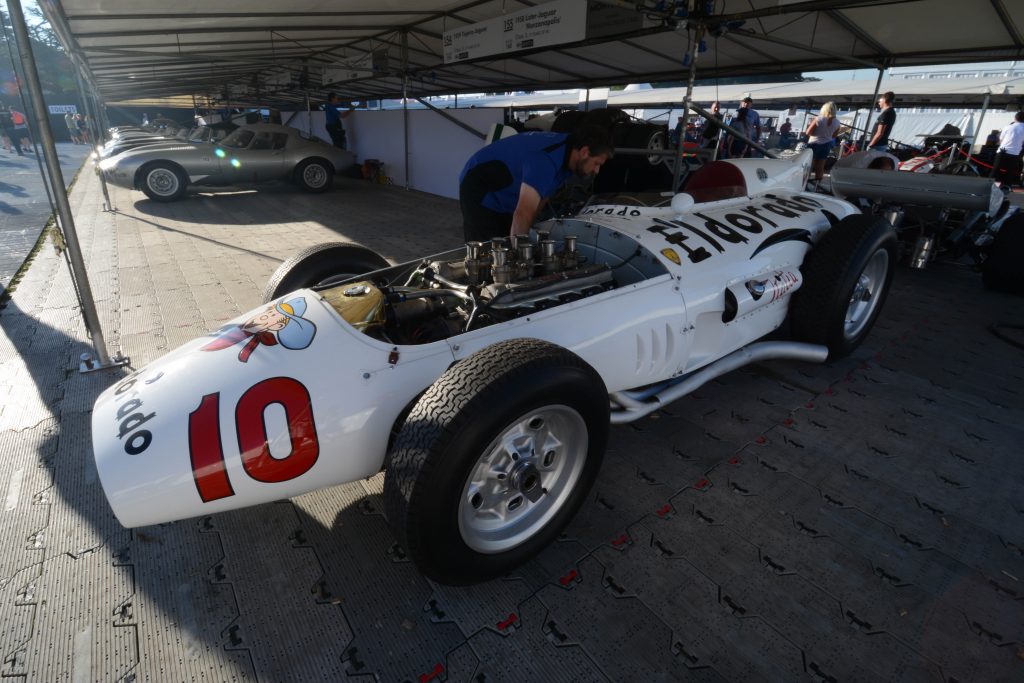
As a former Maserati works driver – Stirling Moss was recruited to drive the Eldorado Special so in true advertising style his name was featured on the bodywork along with Eldorado and Italia.
The specification of the car was impressive with its Giulio Alfieri design featuring a 4,190cc Maserati V8 engine developing 410bhp giving the car a maximum speed of around 217mph.
The engine and transmission were offset to the left by 9cm in true Indy style to counteract the G-forces of the banked circuit. Lightweight aluminium bodywork created by Carozzeria Fantuzzi who had bodied a number of other significant Maserati and Ferrari models.
Other lightening measures were taken to counter the extra weight of the heftily strengthened tubular chassis including magnesium wheel and tyres filled with helium!
Unfortunately – the car with Moss at the helm suffered steering failure in the third round of the Monzanapolis race forcing the car to retire. It was later modified to race at Indianapolis where it failed to qualify.
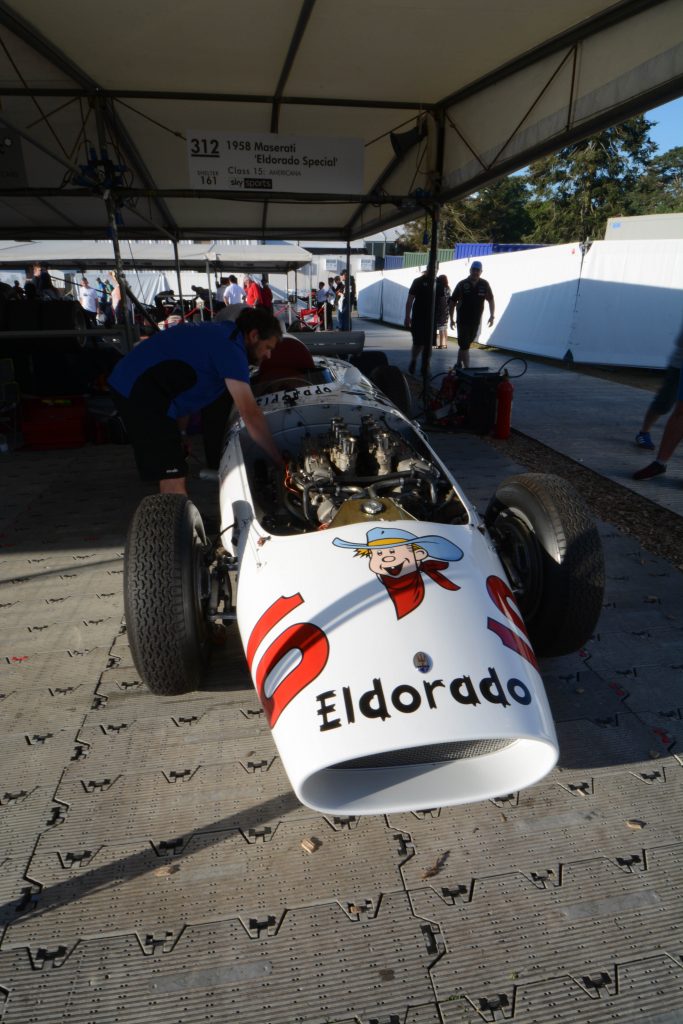
It was a delight to see (and hear) this really unusual car which was built for purely for banked circuit racing where it failed to meet its full potential. It’s good to see that it has been restored to original fully working perfection rather than simply be a static museum piece.
Mercedes
Mercedes provided a fantastic array of historic cars ranging from the 1908 Grand Prix car right the way through the ’90’s CLK LM. Pre-war cars from the “Silver Arrows” period are a firm favourite of mine but I was delighted to see the rolling chassis of the Mercedes-Benz T80 – a Stromlinie leviathan designed by Ferdinand Porsche to exceed 470mph.
To achieve this speed and take the land-speed record – the car featured a lightweight tubular chassis wrapped in beautiful alloy bodywork which made it look like an incredibly fast cuttlefish. Power came from a 44.5 Litre Daimler-Benz DB 603 inverted V12 engine developing 3,000hp. This was derived from the engine which powered the Messerschmitt Bf 109 fighter aircraft.
The car also featured 6 wheels on 3 axles (two of them driven) and meticulously designed streamlined bodywork which gave the car a drag coefficient of just 0.18. Hans Stuck who had championed the car from the outset was all set for the land speed record attempt on Germany’s new autobahns but sadly WWII got in the way and the car was hidden away in Austria. After the war – it found it’s way the Mercedes museum having never tested its potential.
Porsche Number 1
For my money – this car was the star of the show. The very first Porsche car built in the Porsche company’s temporary accommodation of an old sawmill in Gmund, Austria in 1948.
Th car featured a lightweight tubular space-frame clothed in delicately formed aluminium bodywork. The engine and most other mechanical components came from the VW Beetle (another Porsche design) but it differed from the donor vehicle and from the subsequent production 356 by having its engine mid rather than rear-mounted.
The car was used for a while by the factory as a development mule for the subsequent 356 production car before being sold to a Swiss architect. After several more owners and various modifications the car was eventually bought back by Porsche who then attempted to return it to it’s “original condition”. Unfortunately for cars under constant development there is the conundrum of what constitutes “original condition”.
To resolve this conundrum in preparation for the 70th anniversary celebration Porsche quite literally went back to the drawing board i.e. they consulted the original design drawings and technical specifications and built a brand new “original condition” car.
Porsche 911
Always nice to see well turned-out 911’s at events such as these. The range of models on display and tackling the hill was amazing
The 911 RSRs were the most striking of the 911 models but the simple and basic very early 911’s also looked and sounded great.
Porsche 917
This legendary car opened the gate to a period of Porsche dominance in endurance racing and most especially at the home of endurance racing – Le Mans.
The car was designed and developed by Hans Metzger over an incredibly short 10 month period under the guidance of Ferdinand pitch and Helmuth Bott. It wasn’t an immediate success but Porsche very quickly upgraded the car to achieve their first outright victory at Le Mans in 1970 with the Number 23 Porsche Salzburg car driven by Richard Attwood and Hans Hermann.
I had the pleasure of meeting Richard Attwood a year or so ago and I asked him what it was like to drive the 917 at 240mph down the Mulsanne. His response was “bloody dangerous” before going onto explain that Porsche soon sorted out some of the issues with the earliest cars to create a very fast and reliable car.
Porsche 917/30
This monster of a car completely dominated the Canadian-American in the (Can-Am) race series during the 1972 and 1973 seasons. In ’72 it won six out of the none races and in ’73 it won six out of eight races. The car was so successful – they had to change the rules around fuel consumption to effectively ban it!
Its 5.4 Litre flat-12 twin turbo engine churned out 1,100 bhp in race set-up but an extra 400 bhp was available for qualifying by increasing turbo boost from 1.3 to 2 bar!
Weighing just 850kg – the power to weight ration of this beast is just enormous but with its full-fat, high-cholesterol engine it only just about managed to achieve 2mpg! Who cares when the car can accelerate from 0 to 200mph in 13.4 seconds!
An absolutely fantastic machine!
Porsche 935
The Porsche 935 is a beast! A super fast, twin turbocharged fire breathing beast.
Seeing a 935 being aggressively raced is great anytime but dusk, dawn and the middle of the night are best times of day to break out into a cheesy grin as flames belch from the back of a 935 on throttle overrun!
That’s exactly what I experienced at Le Mans Classic a week previous to Goodwood FOS and I still can’t help grinning when I think about it.
Porsche 956
The Porsche 956 was designed by Norbert Singer in 1982 and it ushered in a new period of Porsche dominance in endurance racing as it’s predecessor the 917 had done in the ’70s. Its advanced design included an aluminium monocoque, a dual clutch gearbox and a Type 935 2.65 Litre twin-turbocharged flat-six engine developing around 635hp.
Until June 2018 – the 956 held the record as the fastest car ever driven by the Nurburgring Nordschleife. This record was set by Stefan Bellof in 1983 and it was finally beaten by a highly modified and de-restricted Porsche 919 Eco driven by Timo Bernhard in June 2018.
Bellof achieved his record in a completely standard 956 race car!
The 956 was incredibly successful out of the box in the hands of drivers such as Derek Bell, Jacky Ickx, Stefan Bellof and Jochen Mass and was onward evolved into the Porsche 962
Porsche 962
This was an evolution of the successful 956 which enabled Porsche to compete in the IMSA’s GTP races as well as in European Group C competitions.
The barrier to the 956 competing under IMSA regulations was that the drivers feet were ahead of the front axle so the 962 addressed this issue by extending the wheelbase of the car thereby moving the front wheels ahead of the driver’s pedal box. Other changes included an integrated steel roll cage, a larger 2.8 Litre engine and a single KKK K36 turbocharger.
A total of 91 962’s were built by Porsche between 1984 and 1991 with the vast majority being sold to private teams who carried out their own modifications to eke out an advantage over the competition. Consequently there are many features which are unique to particular team or indeed to particular cars.
The 962 was an incredibly successful car and dominated its field over a long period. Some of the best drivers in the world at the time are used by the factory team and notable privateers such a Joest Porsche Racing, Brun Motorsport and Team Schuppan to name but a few.
Other Porsches
Far too many other wonderful Porshce’s were on display to individually mention but here are some of the ones that simply have to be seen including: the beautiful 904, the retired 919, the new “Pink Pig”, a Carrera GT, gorgeous 356’s (including Carreras), rare single seater Porsches, a 906, a fierce 908/2 with its raucous flat-eight engine, an RS Spyder, 961 and GT1.
I died and went to Porsche heaven!
Wanderer W25 Streamliner Special
As well as the Auto Union Type C, the Audi museum also brought along this wonderful Wanderer W25 Streamliner Special, one of three reconstructed cars commissioned by Audi with reconstruction work carried out by Werner Zinke GmbH.
The Wanderer Streamliner was originally built to compete in the Rome-Liege-Rome long distance race – which the team won in 1938 and again in 1939.
The basis of the car was a Wanderer W 25K chassis onto which the lightweight aluminium streamlined bodywork was built . The car was powered by a 1,963cc 6-cylinder engine delivering around 70bhp at 4,500 rpm. Not a particularly large or powerful engine but in such a light weight and streamlined car – it was enough to achieve a top speed of around 139 km per hour.
Although the car is referred to as a Wanderer – it has the 4-ring badge of Auto Union as it dates from a period after the amalgamation of Audi, DKW, Horch and Wanderer to form Auto Union. At this time – it was common for particular models to still refer back to one of the four founding companies whilst still displaying the four rings which survive today as the Audi logo.
A very handsome car!
Conclusion
So – was this visit a Porsche influenced flash in the pan or will I go to the Goodwood FOS again next year?
On balance – I think I will pay another visit next year. The atmosphere was good and this year at least – the weather was glorious. Most importantly of all however was the quality and rarity of the cars in attendance. Many of the factory museums went to great lengths to not only bring out their prized historic vehicles but they meticulously prepared them to be enthusiastically driven up the hill just as they were built to be driven!
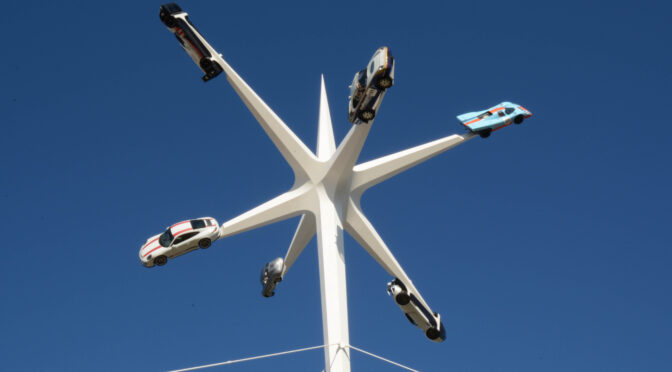
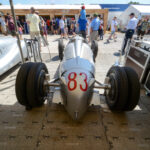
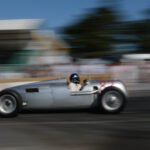
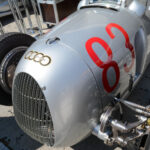

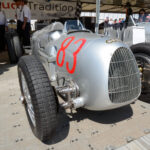
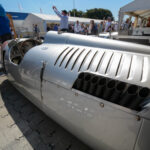




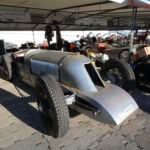
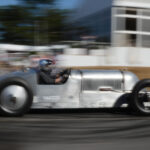




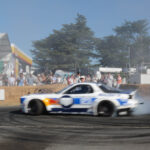

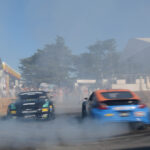


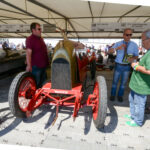

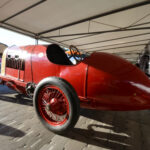





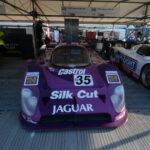
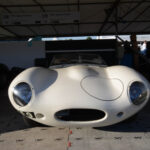
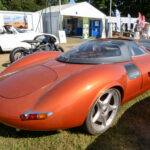
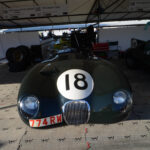
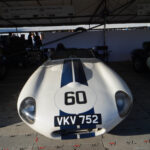
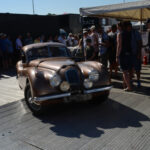
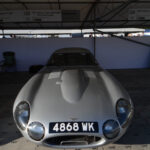
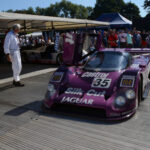
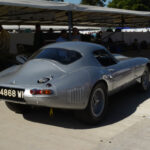
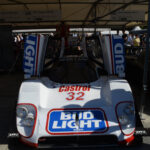
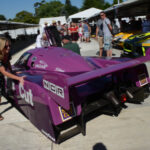
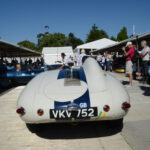
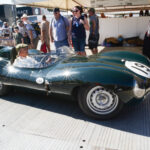
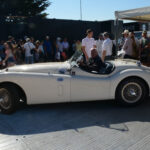
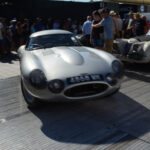
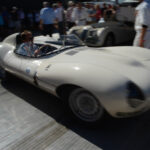


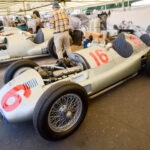
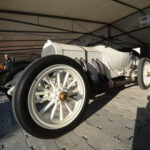
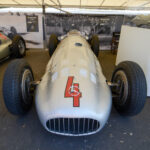

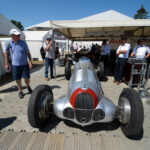

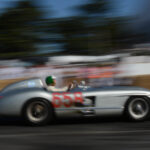



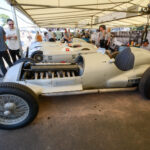
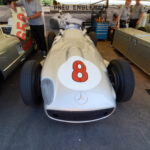
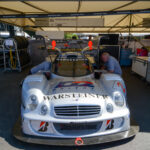

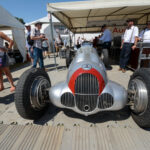

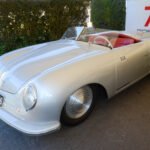

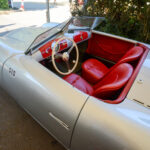
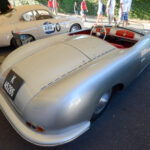

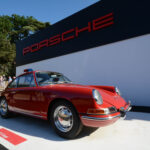
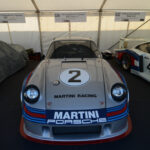

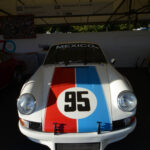
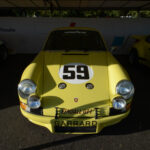
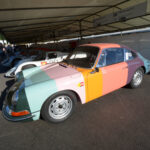

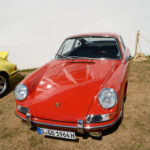
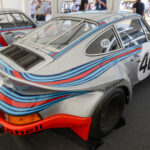

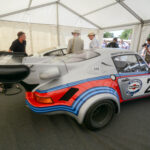


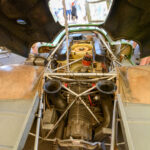

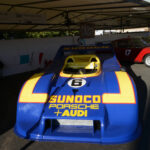

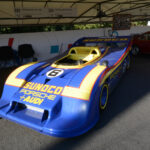
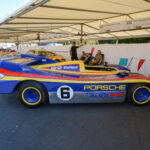
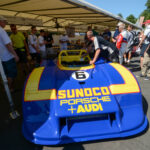
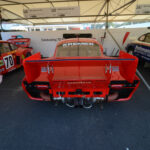
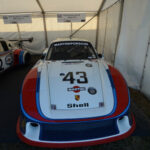
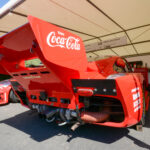

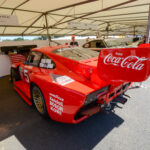


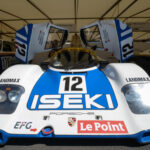
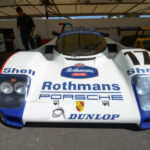

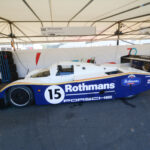
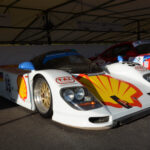




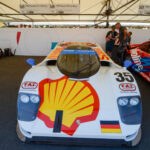




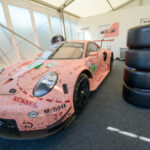
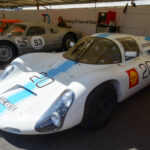
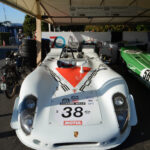

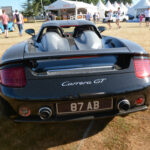



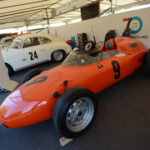
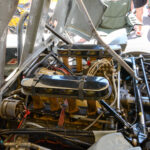
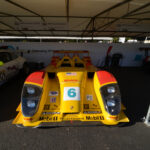
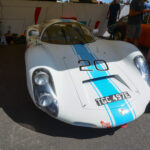
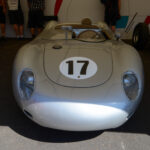
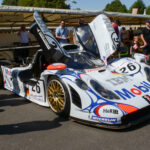
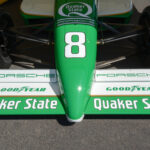

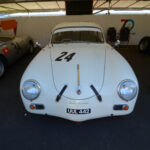
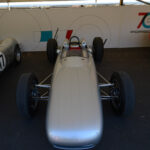




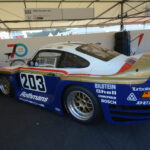
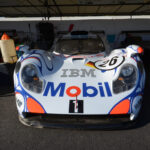
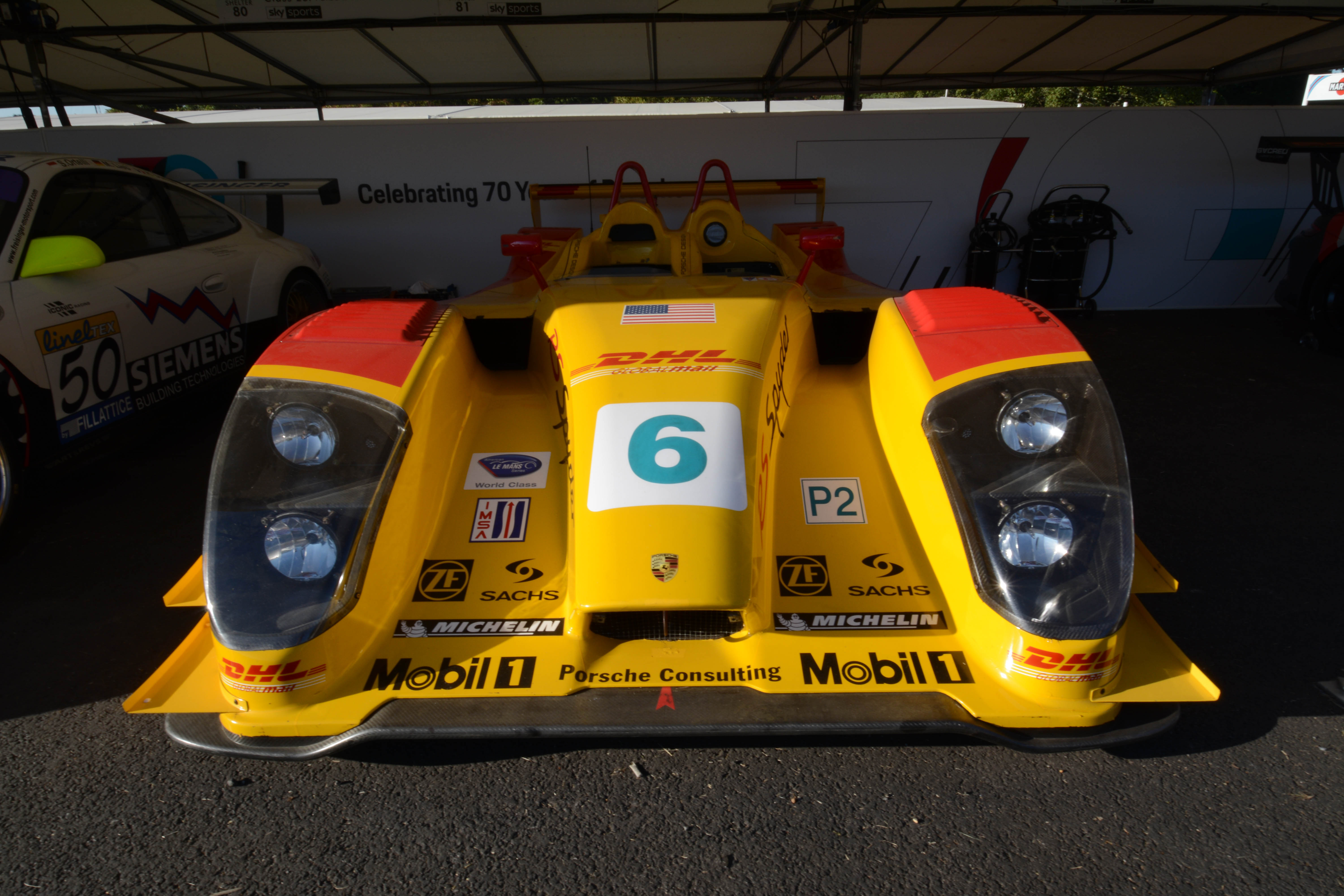
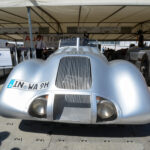


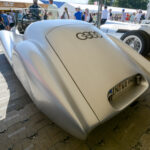
Excellent report young man – I went on the Friday – first time since ’97 and it’s changed a bit to say the least! Fortunately I had access to the Alfa Romeo hospitality suite for some much needed respite.
Thanks Ken – the event has obviously been improving steadily over the years since I last attended. Not sure I’ll be able to resist attending next year!
Perhaps we can swap Alfa and Porsche hospitality next year???……..and get fully hospitalised!!!